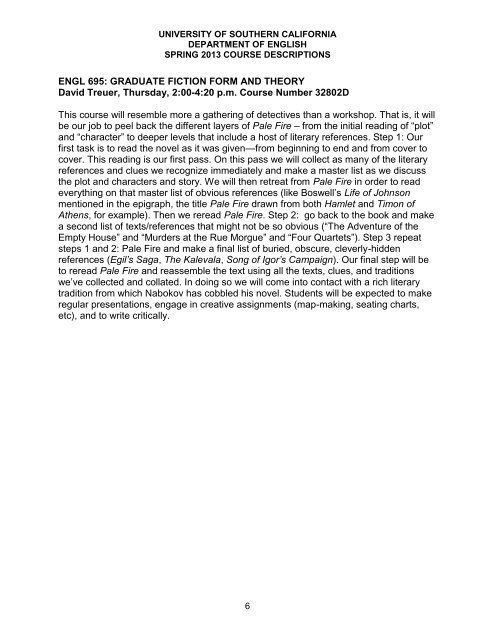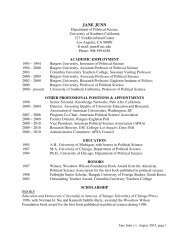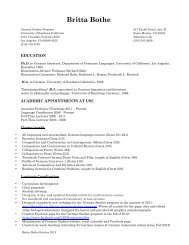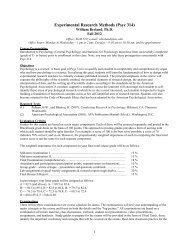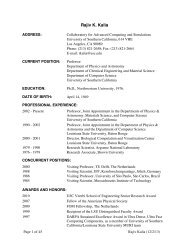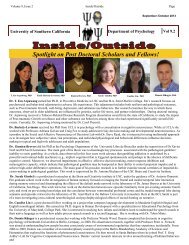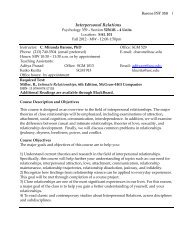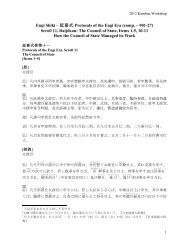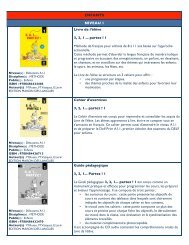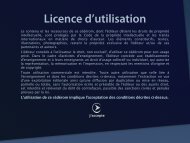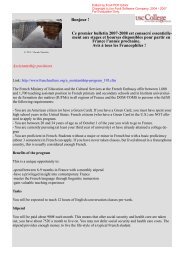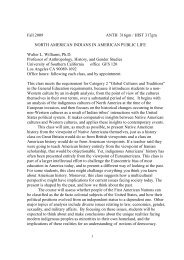ENGL 501: HISTORY OF LITERARY AND CULTURAL THEORY
ENGL 501: HISTORY OF LITERARY AND CULTURAL THEORY
ENGL 501: HISTORY OF LITERARY AND CULTURAL THEORY
Create successful ePaper yourself
Turn your PDF publications into a flip-book with our unique Google optimized e-Paper software.
UNIVERSITY <strong>OF</strong> SOUTHERN CALIFORNIA<br />
DEPARTMENT <strong>OF</strong> <strong>ENGL</strong>ISH<br />
SPRING 2013 COURSE DESCRIPTIONS<br />
<strong>ENGL</strong> 695: GRADUATE FICTION FORM <strong>AND</strong> <strong>THEORY</strong><br />
David Treuer, Thursday, 2:00-4:20 p.m. Course Number 32802D<br />
This course will resemble more a gathering of detectives than a workshop. That is, it will<br />
be our job to peel back the different layers of Pale Fire – from the initial reading of “plot”<br />
and “character” to deeper levels that include a host of literary references. Step 1: Our<br />
first task is to read the novel as it was given—from beginning to end and from cover to<br />
cover. This reading is our first pass. On this pass we will collect as many of the literary<br />
references and clues we recognize immediately and make a master list as we discuss<br />
the plot and characters and story. We will then retreat from Pale Fire in order to read<br />
everything on that master list of obvious references (like Boswell’s Life of Johnson<br />
mentioned in the epigraph, the title Pale Fire drawn from both Hamlet and Timon of<br />
Athens, for example). Then we reread Pale Fire. Step 2: go back to the book and make<br />
a second list of texts/references that might not be so obvious (“The Adventure of the<br />
Empty House” and “Murders at the Rue Morgue” and “Four Quartets”). Step 3 repeat<br />
steps 1 and 2: Pale Fire and make a final list of buried, obscure, cleverly-hidden<br />
references (Egil’s Saga, The Kalevala, Song of Igor’s Campaign). Our final step will be<br />
to reread Pale Fire and reassemble the text using all the texts, clues, and traditions<br />
we’ve collected and collated. In doing so we will come into contact with a rich literary<br />
tradition from which Nabokov has cobbled his novel. Students will be expected to make<br />
regular presentations, engage in creative assignments (map-making, seating charts,<br />
etc), and to write critically.<br />
6


